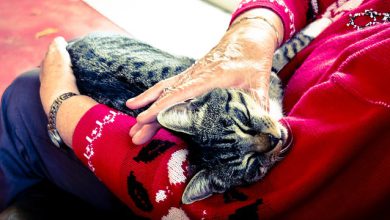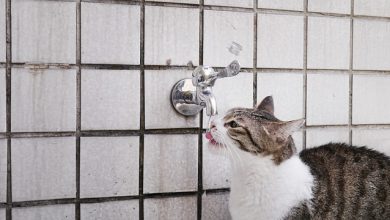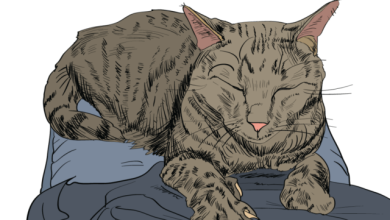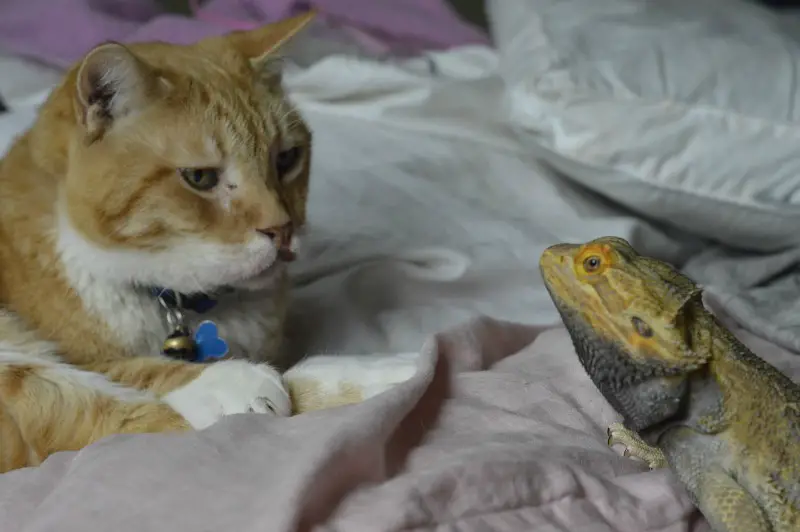
The domestic cat has long been one of the most common furry companions found in households across the United States.
However, it wasn’t until the 1990s that the Bearded Dragon (or Beardie) was introduced as a companion throughout homes.

Today, the rise of the Beardie pet continues to increase rapidly as this small lizard is now seen as more than just another exotic pet.
It should therefore come as no surprise that the domestic cat and the bearded dragon will cross paths and be introduced to one another. This brings us to the question, “can cats and bearded dragons be friends?”

Here we will explain the commonalties, differences and steps on how to introduce and ensure your two well-loved pets may harmoniously co-exist.
Commonalities Between the Bearded Dragon and the Cat
They Are Both Friendly
The bearded dragon is among one of the friendlier reptiles. They are not known to show aggression or display negative behaviors such as biting. This makes them a great beginners reptile; as they are easy-going and even tempered.
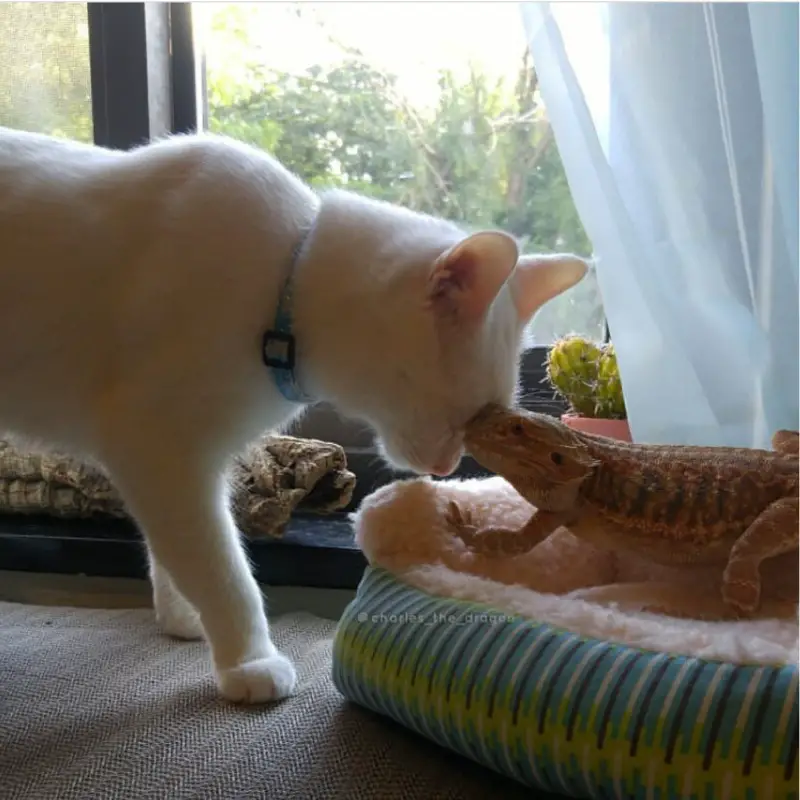
The cat is also super friendly towards their owners. Although, a hidden agenda of food lust may be at play.
Overall, both these companions can be friendly when raised and socialized properly.
They Can Both Be Affectionate
They are known to develop a close bond with their owners. Some bearded dragons may even react positively to being picked up and will happily engage in cuddling situations. Favorite spots include your neck or chest. As a cold blooded animal, this helps them keep warm.

The domestic cat is definitely known to be friendly, and often sits wherever and whenever they like. May that be by your side, in your bed, or on your lap.
Both these pets can be affectionate once they gain trust and form a bond with their owners and families.
They Can Both Be Tolerant of Other Animals
The bearded dragon can be described as a placid animal; and they are known to get along well with other animals in the household.
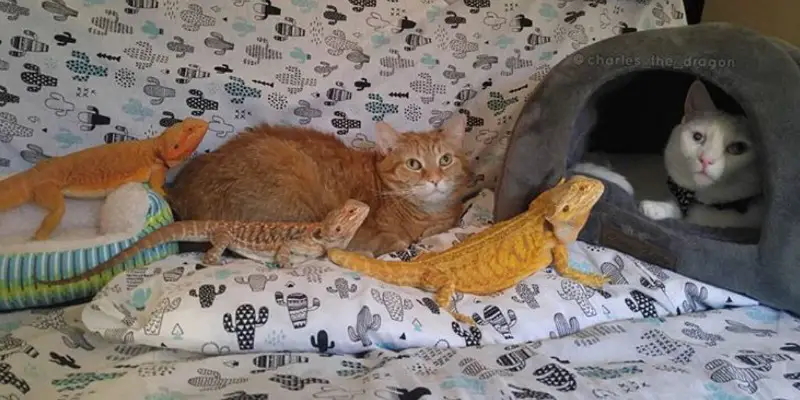
The cat is sassier than placid. They may show an attitude towards new friends. Still, they learn to show tolerance. For example: Growing tolerance towards a new and overly excited puppy. The cat may not love the drooling puppy but over time they learn to accept this new member and be tolerant of them.
Differences Between the Bearded Dragon and the Cat
Differences In Communication
As a different species, their social cues may differ.
The domestic cat is not verbal and instead they use social cues to access a new being. For example, sniffing the head and/or rear area of a new animal.
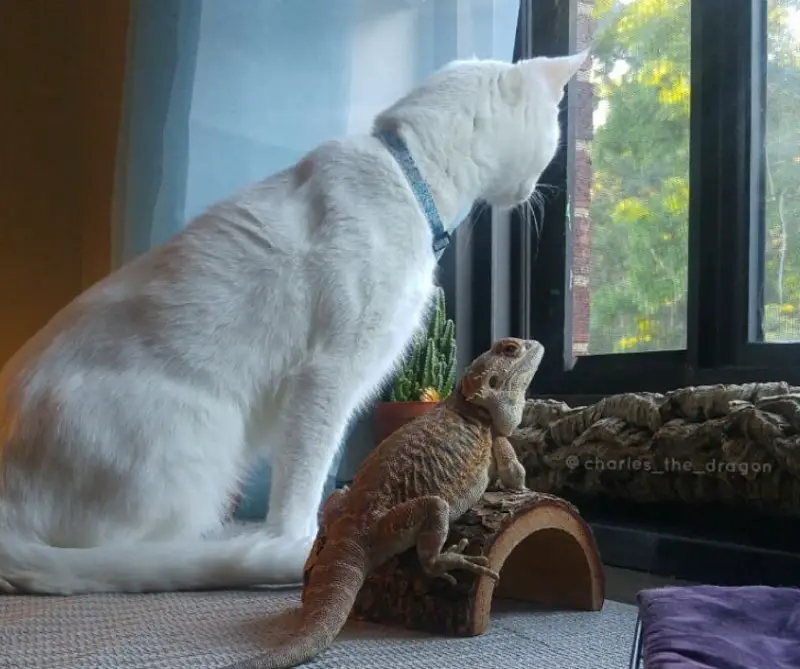
The bearded dragon is not verbal either. They often use forms of body language to socialize. For example, they may wave their arms rapidly as a friendly “hi!” – the feline may take this rapid movement as a sign to play so it’s important to be careful.
Prey vs. Predator
The domestic cat may initially portray the bearded dragon as a new and unusual prey. This is due to their small size. However, some cats tend to have a higher play or prey drive than others.
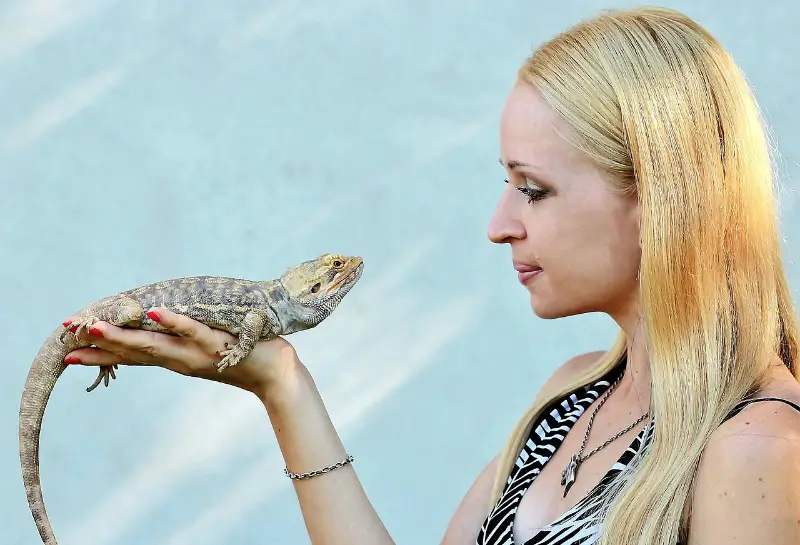
The cat has strong predator instincts. These instincts cannot be completely erased however; they may be controlled.
The bearded dragon is not known to be intimidated by larger animals such as dogs or cats.
Differences In Habitat Requirements
The cat doesn’t require specialized requirements in the household.
However, the bearded dragon needs everything reptiles usually require such as: UV light, heat, and moisture. As a small pet reptile, they require a tank which safely provides all of these necessities.

Their differences in habitat requirements may act as a safe zone for the bearded dragon when you are not home. Not only does their habitat provide them with their life essentials, but it also provides them with a place of solitude away from other pets.
So, Can They Be Friends?
Yes, we believe that the bearded dragon is able to befriend the domestic cat. However, meeting and greeting should be pre-planned and these two should not be left to their own devices straight away.
Here are a few steps to help guide you through introductions:
Step 1: Find a reputable breeder
Be sure to find a reputable and responsible breeder when purchasing your bearded dragon. A good breeder will ensure that your bearded dragon is handled and treated right. Abused animals may be prone to fearful or aggressive behaviors.
Step 2: Ensure you have control over both animals simultaneously
We recommend this as a two-person job. One person having control of the Beardie and the other having control over the cat. Be wary of your animal’s behaviors and social cues around one another. Watch out for signs of aggression during interactions. Keeping an eye on your animals enables you to react quickly to any unexpected aggressive tendencies or instinctual behaviors.
Step 3: Be patient
Take introductions and meetings slow so they are able to familiarize themselves with one another. It takes time! Both your bearded dragon and cat require time to figure out if the other is a “friend” or “foe”. Let them both feel comfortable and learn to accept one another. Allow your pets to sniff and investigate the other. Adjustment periods are normal with all pets.
Step 4: Supervise their time together
Even when you are confident with your bearded dragon and your cat together; we recommend supervision at all times. The unexpected may occur when you least expect it and it is definitely better to be safe than sorry.

Summary
Overall, with proper introductions and socialization from a young age and over time; the two may get along famously and may even become best friends. It is not unheard of for a bearded dragon and a cat to accept, cuddle, and even play with one another. Remember, every animal’s personality and temperament differs!
Photo credits: Most of the photos used were from a delightful IG account called @charles_the_dragon who kindly gave us permission to use. Be sure to check them out.
Author: This guest post was kindly contributed by Johnathan David – Editor of Everything Reptile.
